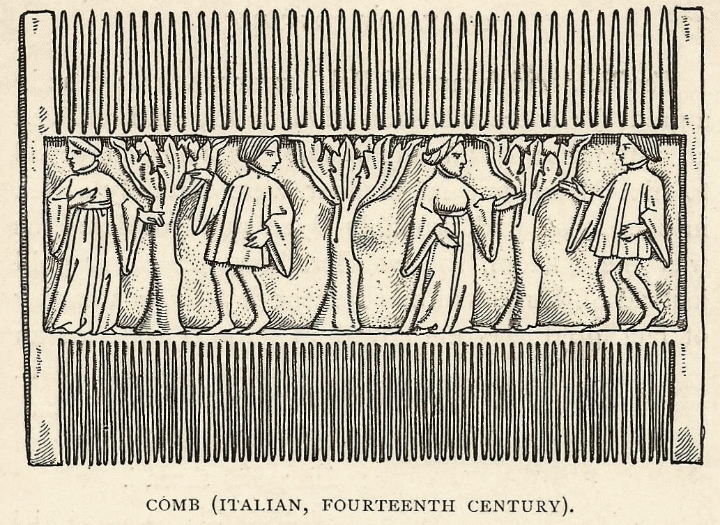The Dressing of the Hair, Moustachios and Beard (2)

Previous page
From Gregory of Tours we learn that in the Royal family of France it was for a long time the peculiar privilege of Kings and Princes of the blood to wear long hair, artfully dressed and curled; everybody else was polled, as a sign of inferiority and obedience. To cut off the hair of a son of France under the first race of Kings was to exclude him from the right of succession to the crown, and to reduce him to the condition of a subject.
French historians, however, tell us that Charlemagne wore his hair short, his son much shorter, and Charles the Bald, as his surname indicates, none at all.
Good Luitprand furiously declaimed against the Emperor Phocyas for wearing long hair, after the manner of all the other Emperors of the East, with the exception of Theophilus, who, being bald, enjoined all his subjects to shave their heads, like the fox of Aesop, who, having survived the experience of a trap by the sacrifice of his tail, harangued the other foxes on the inconvenience of tails in general, and endeavoured to persuade them to cut off theirs also.
The Nazarite has been regarded as a conqueror who subdued his temptations, and who wore his long hair as a crown, the hair being worn rough as a protest against foppery. Another view, however, is that it was kept elaborately dressed, a proof of the existence of the custom being seen in the seven locks of Samson:
"And she made him sleep upon her knees; and she called for a man, and she caused him to shave off the seven locks of his head; and she began to afflict him, and his strength went from him " (Judg. xvi. t 9).
Let us listen to the story in the quaint, silvery music of Chaucer:
"This Sampson neyther siser dronk ne wyn
Ne on his heed com rasour noon ne schere
By precept of the messager divyn
For alle his strengthes in his heres were.
Unto his lemman Dalida he tolde
That in his heres al his strengthe lay
And falsly to his foomen sche him solde
And slepying in hir barm upon a day
Sche made to clippe or schere his heres away
And made his foomen al his craft espien
And whan thay fond him in this array
Thay bound him fast and put out bothe his yen.
But er his heer clipped was or i-schave
Ther was no bond with which men might him bynde
But now is he in prisoun in a cave
Ther as thay made him at the querne grynde
0 noble Sampson strengest of al man kynde
0 whilom jugge in glory and in richesse
Now maystow wepe with thine eyyen blynde
Sith thou fro wele art falle to wrecchednesse."
Monk's Tale
Next Page 01 02 03 04 05 06 07 08 09 10 11 12